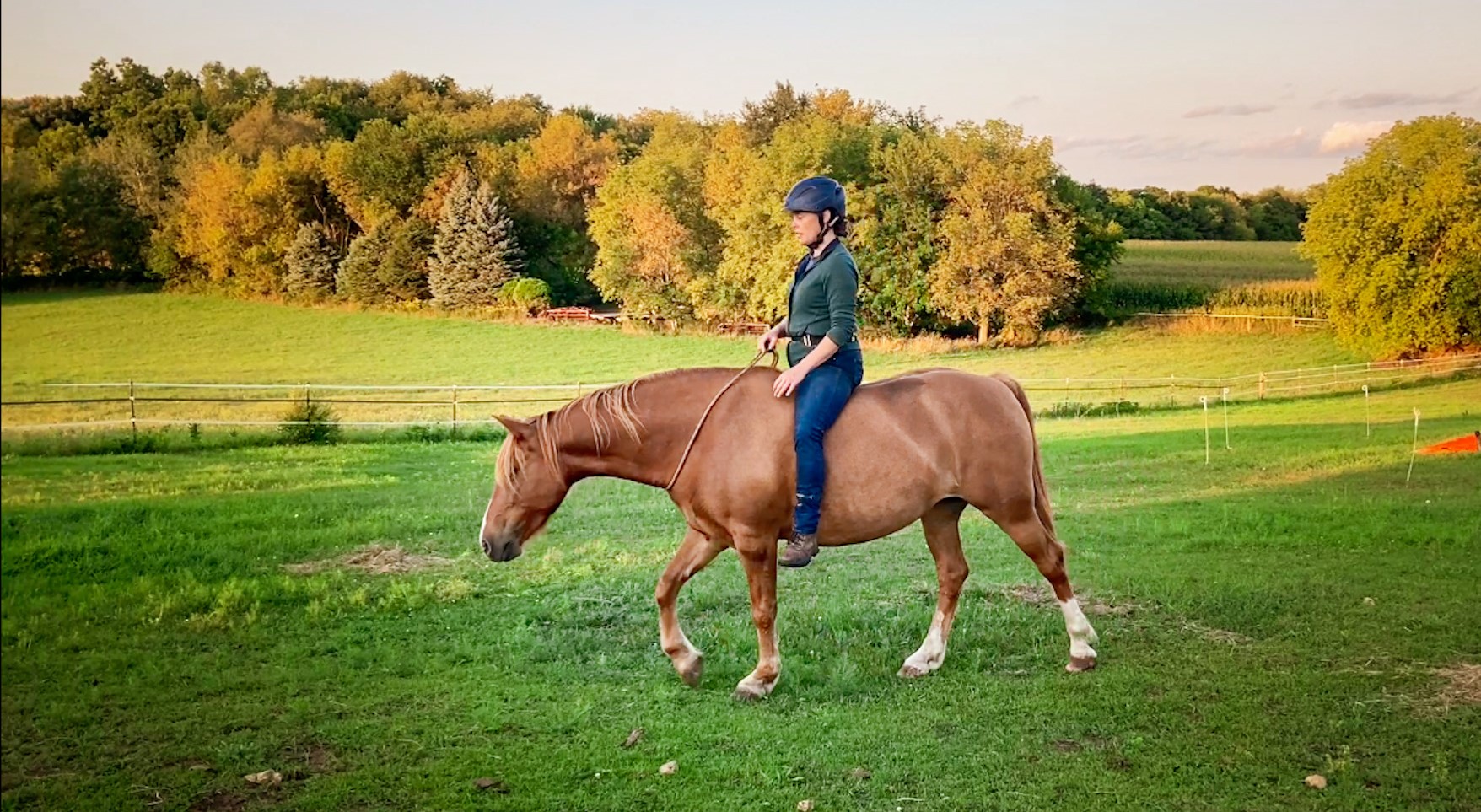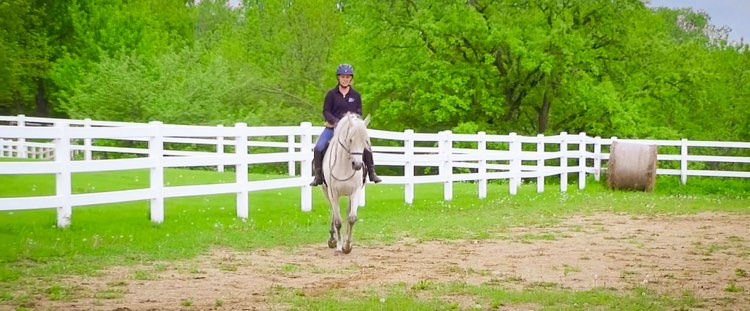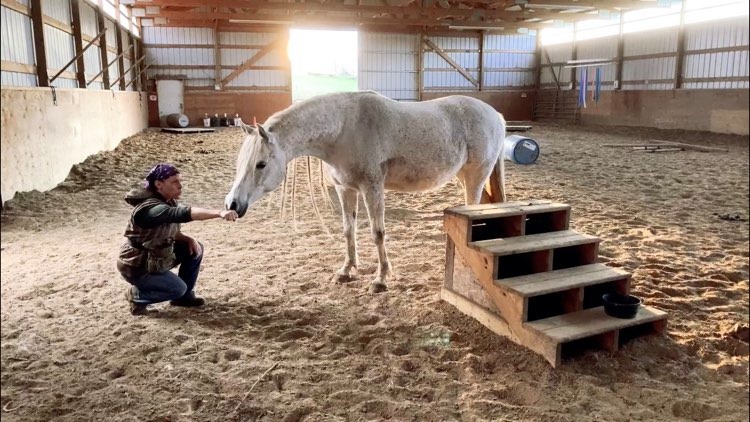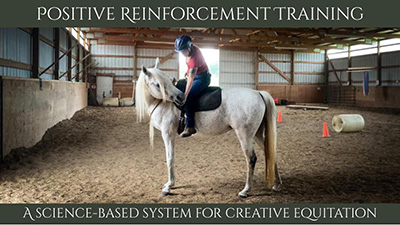brains, not reins
Historically, we've used tack as a means of everything from communication to coercion. Tack has an enormous impact on a horse's wellbeing, on so many levels. However, tack is simply an external mechanism with limited, straight-line, one-way application.
But what if we didn't need those constraints?
What we're really trying to reach is the horse's brain, their mind. This is where all the learning takes place: within the horse's emotions and experiences. Using the process of shaping, through positive reinforcement training, we can train without the overshadowing effect of tack, while also allowing space for the horse to communicate with us.
In particular, there’s nothing about a bridle that the horse innately understands. It all has to be taught, which means you don’t need a bridle to teach a horse rein cues, even for complex movements. Cues for turning, stopping, bending, and lateral work can be given by the seat and legs of the rider, allowing the horse the freedom they should have to truly, by definition, be in self carriage.
feel is a learnable skillset
“Feel” is not a mystical gift only given to a select few, but a learnable ability composed of the individual skills of movement quality, timing, and rhythm working together. Simply put, it's knowing what you’re looking at, what to do about it, and when to do it.
How you move affects how your horse responds to you, and how easily you can respond to your horse. For example, easing in and out - using a slower speed in the beginning and end of movement - can improve your timing and accuracy. With good timing you start to develop a rhythm. A rhythm allows you and your horse to predict when and where to move, which will develop your overall feel. Once you have the pattern down, the words wash away and what's left is the action and felt-sense of seeing the horse, and being seen by the horse.
What if you couldn't fail?
Training isn't just doing the thing until it becomes available on demand. Good training is boring to watch, unless you know what you’re looking at.
From basic skills, to intermediate training tools and concepts, to practical application for riding and husbandry training, the emphasis is on building foundations so strong they withstand anything the world puts on them.
Want to know more?
Here is a little e-book I wrote on starting positive reinforcement training (click HERE to download). It's free, with no strings attached. It's everything I like new clients to know when considering working with me. I'm happy to answer questions!
Do you have questions?
While there’s a structure to learning and to positive reinforcement, there’s no single path to success. Every horse is different, and a lot of horses (and people!) are different on different days. Let me help you make a fun, flexible training plan that celebrates your and your horse’s individuality.
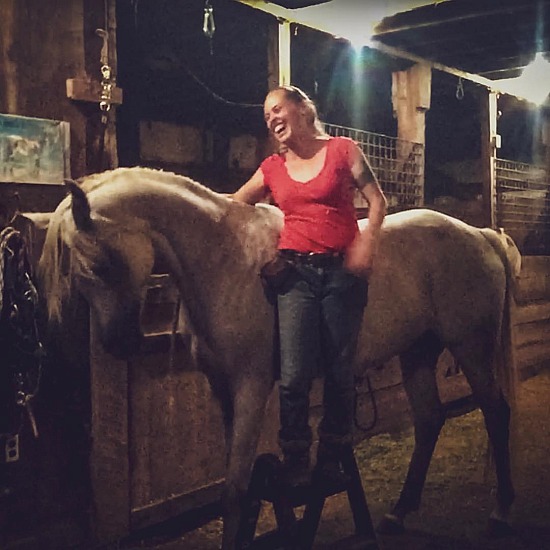
Heather K McManamy
South Central WI
Text welcome at 608-333-6950
